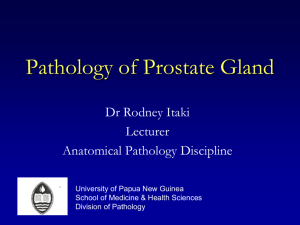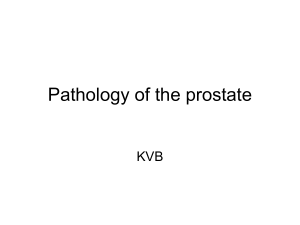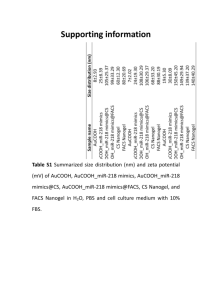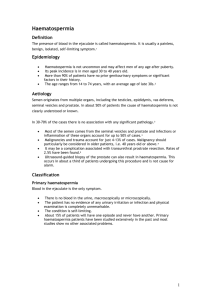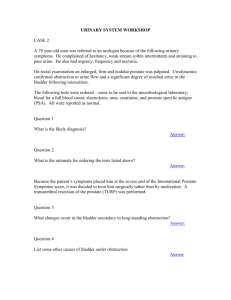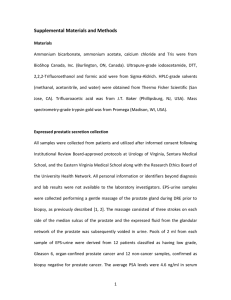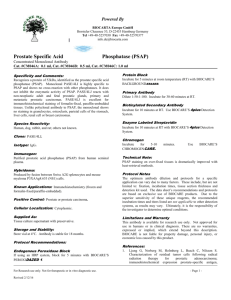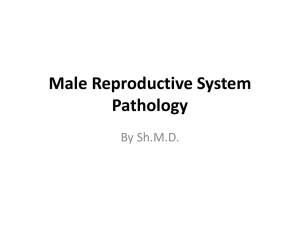Ppt Slide
advertisement
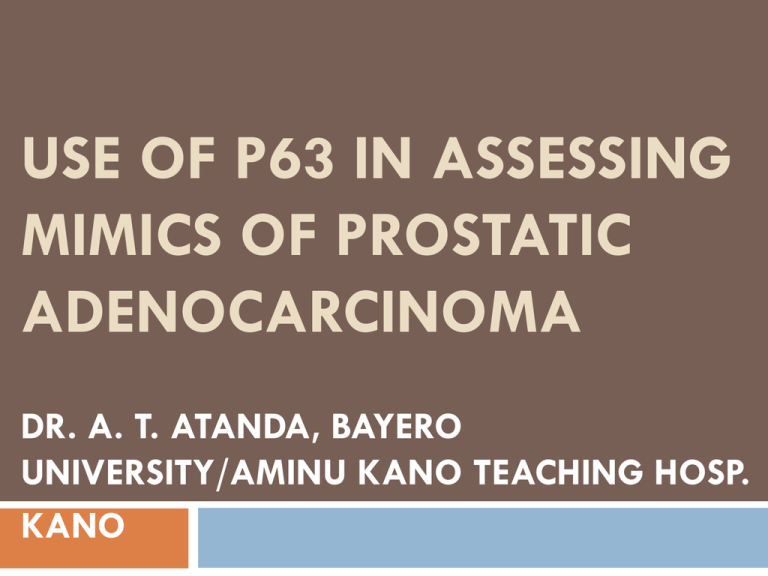
USE OF P63 IN ASSESSING MIMICS OF PROSTATIC ADENOCARCINOMA DR. A. T. ATANDA, BAYERO UNIVERSITY/AMINU KANO TEACHING HOSP. KANO BACKGROUND Prostatic carcinoma has several well documented mimics, particularly on core needle biopsy, for which the pathologist cannot rely on morphology alone for their differential diagnosis. Correct evaluation of these mimics will help prevent unnecessary treatment for cancer. Mimics of Prostatic Carcinoma Atrophy Basal Cell Hyperplasia Adenosis Seminal vesicles Ganglia Paraganglia AIM To evaluate the reliability of morphology alone measured against immunohistochemistry in evaluating equivocal prostatic biopsies. METHODOLOGY p63 immunohistochemical stain (clone BC4A4) equivocal impressions of benign versus malignant diagnoses over a 12-month period (Jan – Dec., 2013) Negative stain = positive for malignancy Positive stain = negative for malignancy Criteria for diagnosis of CaP Major criteria infiltrative acini which may have cribriform disposition absence of basal cells; and nuclear and/or nucleolar enlargement. Minor criteria included: adjacent high grade PIN and nuclear hyperchromasia others mucinous fibroplasia, perineural invasion and glomerulations Results 61 cases of CaP 27(44.3%) were considered equivocal. 6 (22.2%) of the 27 showed basal cell staining 3 cases of atrophy basal cell hyperplasia clear cell cribriform hyperplasia Urothelium Results The probability of erroneous interpretation ranged btw 8.7% and 42.3% PPV of morphology alone was 77.8%. RESULT ctd Sensitivity of 100% (83.8% to 100%); Specificity of 77.8% (57.7% to 91.3%); NPV of 100%. Discussion Our study 22.2% reclassified; Error rate 8.7% (sensitivity:77.8%; specificity: 100%) 7.5% error rate reported by Berney et at1 (London) 1.3% documented by Epstein et al2 in the US 100% and 64%.3 Reasons for lower specificity by morphology Surgeons Sample adequacy (volume & number) Crush artifacts Cauterization artifacts Pathologists Good sections inexperience Discussion The use of immunohistochemical staining for p63 protein alone, or as a component of a cocktail comprising p63, alpha-methyl-CoA-racemase (AMACR) and Cytokeratin CK903,3 is also gaining momentum. conclusion For improvement in diagnosis of carcinoma of prostate, particularly from core needle biopsies, there is need for pathologists to pay attention to the common mimics of carcinoma and incorporate immunohistochemistry into their diagnostic armamentarium. References 1. Berney DM, Fisher G, Kattan MW, Oliver RT, Møller H, Fearn P, et al; Trans-Atlantic prostate group. Pitfalls in the diagnosis of prostatic cancer: retrospective review of 1791 cases z with clinical outcome. Histopathology 2007; 51: 452-7. 2. Epstein JI, Walsh PC, Sanfilippo F. Clinical and cost impact of second-opinion pathology: review of prostate biopsies prior to radical prostatectomy. Am J Surg Pathol 1996; 20: 851-7. 3. Tokumaru Y, Harden S V, Sun D I, Yamashita K, Epstein J I, Sidransky D. Optimal use of a panel of methylation markers with GSTP1 hypermethylation in the diagnosis of prostate adenocarcinoma. Clin Cancer Res 2004; 10: 5518-22.


